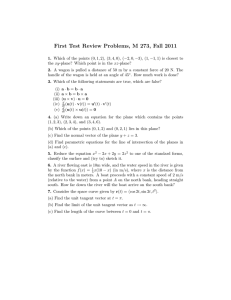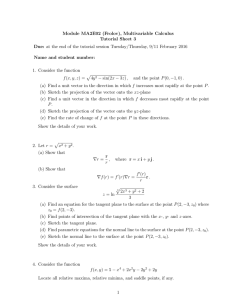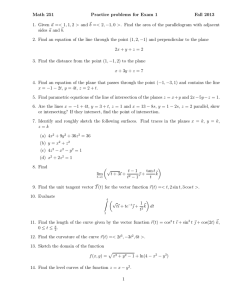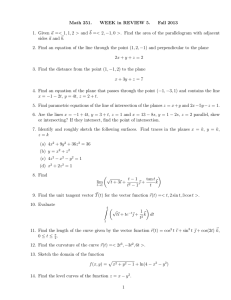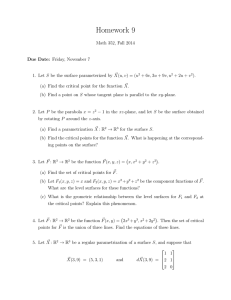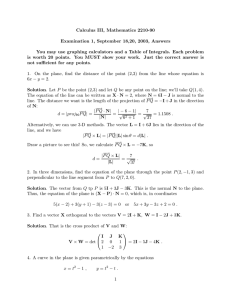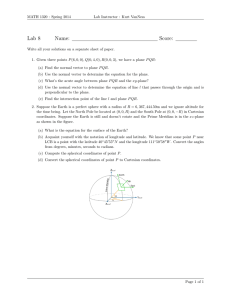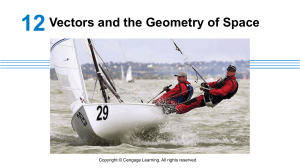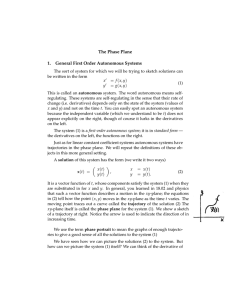First Test Review Key, M 273, Fall 2011
advertisement
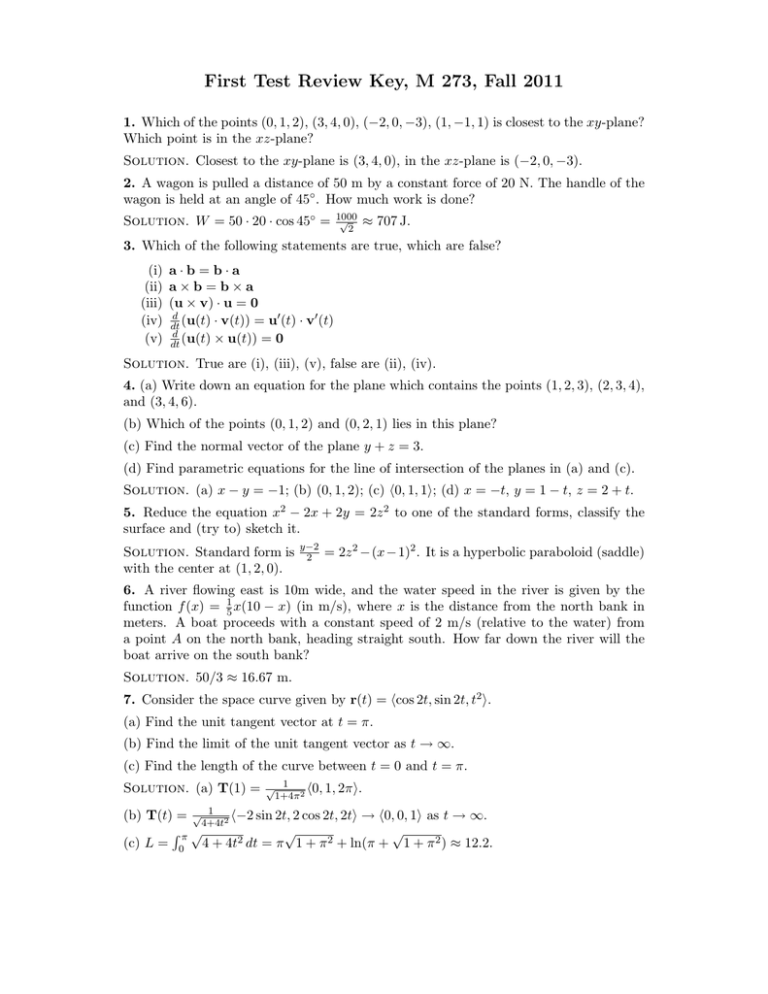
First Test Review Key, M 273, Fall 2011 1. Which of the points (0, 1, 2), (3, 4, 0), (−2, 0, −3), (1, −1, 1) is closest to the xy-plane? Which point is in the xz-plane? Solution. Closest to the xy-plane is (3, 4, 0), in the xz-plane is (−2, 0, −3). 2. A wagon is pulled a distance of 50 m by a constant force of 20 N. The handle of the wagon is held at an angle of 45◦ . How much work is done? Solution. W = 50 · 20 · cos 45◦ = 1000 √ 2 ≈ 707 J. 3. Which of the following statements are true, which are false? (i) a · b = b · a (ii) a × b = b × a (iii) (u × v) · u = 0 d (iv) dt (u(t) · v(t)) = u0 (t) · v0 (t) d (v) dt (u(t) × u(t)) = 0 Solution. True are (i), (iii), (v), false are (ii), (iv). 4. (a) Write down an equation for the plane which contains the points (1, 2, 3), (2, 3, 4), and (3, 4, 6). (b) Which of the points (0, 1, 2) and (0, 2, 1) lies in this plane? (c) Find the normal vector of the plane y + z = 3. (d) Find parametric equations for the line of intersection of the planes in (a) and (c). Solution. (a) x − y = −1; (b) (0, 1, 2); (c) h0, 1, 1i; (d) x = −t, y = 1 − t, z = 2 + t. 5. Reduce the equation x2 − 2x + 2y = 2z 2 to one of the standard forms, classify the surface and (try to) sketch it. Solution. Standard form is with the center at (1, 2, 0). y−2 2 = 2z 2 −(x−1)2 . It is a hyperbolic paraboloid (saddle) 6. A river flowing east is 10m wide, and the water speed in the river is given by the function f (x) = 15 x(10 − x) (in m/s), where x is the distance from the north bank in meters. A boat proceeds with a constant speed of 2 m/s (relative to the water) from a point A on the north bank, heading straight south. How far down the river will the boat arrive on the south bank? Solution. 50/3 ≈ 16.67 m. 7. Consider the space curve given by r(t) = hcos 2t, sin 2t, t2 i. (a) Find the unit tangent vector at t = π. (b) Find the limit of the unit tangent vector as t → ∞. (c) Find the length of the curve between t = 0 and t = π. Solution. (a) T(1) = √ 1 h0, 1, 2πi. 1+4π 2 1 (b) T(t) = √4+4t h−2 sin 2t, 2 cos 2t, 2ti → h0, 0, 1i as t → ∞. 2 √ √ Rπ√ (c) L = 0 4 + 4t2 dt = π 1 + π 2 + ln(π + 1 + π 2 ) ≈ 12.2.
